#bedrifelek kadin
Photo

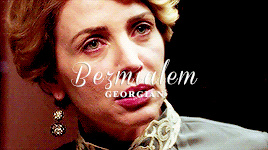

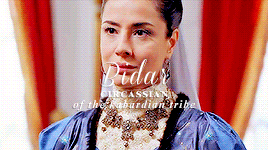

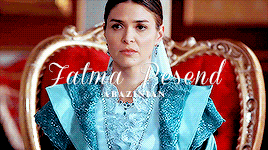
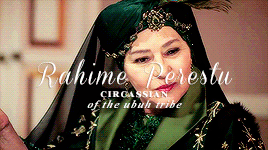



Notable Ottoman consorts hailing from the Caucasus -- requested by anon
#history#historyedit#ottoman history#mahidevran hatun#haseki sivekar sultan#bidar kadin#rahime perestu sultan#bezmialem sultan#bedrifelek kadin#fatma pesend hanim#serfiraz hanim#emine nazikeda kadin#servetseza kadin#ottomanladiesedit
144 notes
·
View notes
Photo







𝐢𝐧 𝐭𝐡𝐞 𝐦𝐨𝐧𝐭𝐡 𝐨𝐟 𝐅𝐞𝐛𝐫𝐮𝐚𝐫𝐲 𝐢𝐧 𝐎𝐭𝐭𝐨𝐦𝐚𝐧 𝐡𝐢𝐬𝐭𝐨𝐫𝐲
#history#historyedit#ottoman history#ottomanladiesedit#*everymonth#husnusah kadin#mehmed vi#murad ii#mahidevran hatun#fatma neslisah sultan daughter of sehzade omer faruk#saliha naciye hanim#saliha sultan daughter of mahmud ii#pertevniyal sultan#mustafa ii#bedrifelek kadin#osman ii#refia sultan daughter of abdulmecid i#murad iv#abdulhamid ii#ummugulsum sultan daughter of ahmed iii#sayeste hanim#adile sultan daughter of mahmud ii#nazima sultan daughter of abdulaziz#abdulaziz#elaru mevhibe kadin#sehzade cem son of mehmed ii#ahmed ii#cemile sultan daughter of abdulmecid i#meleki kalfa
136 notes
·
View notes
Photo





𝐢𝐧 𝐭𝐡𝐞 𝐦𝐨𝐧𝐭𝐡 𝐨𝐟 𝐉𝐚𝐧𝐮𝐚𝐫𝐲 𝐢𝐧 𝐎𝐭𝐭𝐨𝐦𝐚𝐧 𝐡𝐢𝐬𝐭𝐨𝐫𝐲
#history#historyedit#ottoman history#*everymonth#ottomanladiesedit#mihrimah sultan#safiye sultan#mehmed iv#bidar kadin#saliha dilasub sultan#sayan kadin#bedrifelek kadin#refia sultan daughter of abdulmecid i#osman iii#sehzade mehmed son of ahmed i#haseki rabia sultan#murad iii#mustafa i#zekiye sultan daughter of abdulhamid ii#fatma ulviye sultan daughter of mehmed vi#durrusehvar sultan daughter of abdulmecid ii#mustafa iii
143 notes
·
View notes
Photo
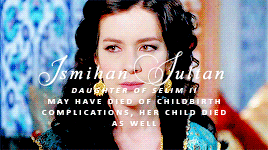

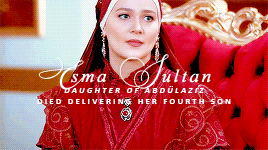
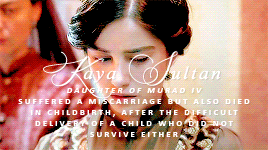




OTTOMANLADIES’ 2ND BIRTHDAY CELEBRATIONS
ottoman women who suffered miscarriages, stillbirths, became unable to have children or died in childbirth – requested by anon
#history#historyedit#ottoman history#safiye sultan#ismihan sultan daughter of selim ii#kaya ismihan sultan daughter of murad iv#safiye sultan daughter of murad iv#esma sultan daughter of abdulaziz#bedrifelek kadin#emine nazikeda kadin#hayriye hanimsultan#ottomanladiesedit#*requested
363 notes
·
View notes
Note
I feel pity for Servetseza Kadın (wife of Abdulmejid I) and Bedrifelek Kadın (wife of Abdul Hamid II), because the sultans didn’t had a string relation although they were the most kind wives of Abdulmejid I and Abdul Hamid II, what do you think?
I have never thought about them in that way, and I don't know if they can be compared because Servetseza had no children with Abdülmecid I but Bedrifelek had three with Abdülhamid II. And the two sultans were very different themselves. While I don't think that Abdülmecid I mistreated or ignored Servetseza, Abdülhamid II wouldn't even visit Bedrifelek in her rooms. Indeed, when Gülcemal Kadınefendi died, Abdülmecid I entrusted Servetseza with her children. I think this shows that he trusted her and valued her; he just wasn't in love with her.
#anon#ask post#ask: ottoman history#servetseza kadin#bedrifelek kadin#abdulhamid ii#abdulmecid i#gulcemal kadin#Anonymous
11 notes
·
View notes
Text
On this day, 13 July, in Ottoman history
13 July 1628 - wedding of Fatma Sultan and Damad Kara Mustafa Paşa: daughter of Ahmed I and his Haseki Sultan Kösem, this was the princess’ second wedding. It lasted only months, though, because the Paşa was executed in the same year by her brother Murad IV.
13 July 1909 - death of Şehzade Süleyman Efendi: son of Sultan Abdülmecid and Serfiraz Hanım, he had been born in 1860.
13 July 1909 - birth of Şehzade Mehmed Orhan: son of Abdülhamid II’s son Şehzade Mehmed Abdülkadir and his consort Mihriban Hanım, he was born in the mansion of his aunt Naime Sultan. “From 1983 Prince Orhan served as head of the imperial house from his home in France until his death on 12 March 1994 in Nice, where he is buried.” – Douglas Scott Brookes.
13 July 1950 - death of Zekiye Sultan: daughter of Abdülhamid II and his Senior Imperial Consort Bedrifelek Kadın, she was born in Dolmabahçe Palace on 21 January 1872. She had learned how to play the piano from Lombardi Bey. She married Damad Ali Nureddin Paşa on 20 April 1889 and settled down in Ortaköy Palace, where 80 men and 80 women were in their service. When they had to flee to France after the abolition of the empire, the whole family lived in one room in a hotel, which they never paid because the Paşa had been the grandson of Gazi Osman Paşa, a famous statesman. With Ali Nureddin, Zekiye had only one daughter, Farma Aliye Hanımsultan (1891-1972). Zekiye Sultan died in Pau, France, on 13 July 1950 and was buried there; her husband would survive her of two years.
13 July 1968 - death of Mehmed Fehreddin Efendi: grandson of Abdülhamid II through his son Şehzade Mehmed Burhaneddin and his second consort Aliyye Melek Nazlıyâr “Yalçın” Hanımefendi, he was a graduate of the Viennese Theresianum colloge and the Paris Académie des Beaux-Arts.
#history#ottoman history#on this day in history#on this day in ottoman history#fatma sultan daughter of ahmed i#abdulmecid#serfiraz hanim#abdulhamid ii#zekiye sultan daughter of abdulhamid ii#bedrifelek kadin#late ottoman empire
15 notes
·
View notes
Note
did any of the concubines or ottoman princesses suffer difficult pregnancies or multiple miscarriages or stillbirths,like in European dynasties or is there no record of this,i mean both Farya and Mahidevran suffered miscarriages but it was probably added from drama but i feel like it probably happened in the dynasty
Hello! We know of some cases, yes, in which either concubines or princesses had difficult births or stillbirths or miscarriages.
According to the Venetian Ambassador, Safiye Sultan had given birth to several children who had all die except for Mehmed III, Ayşe Sultan and Fatma Sultan. Apparently at some point she had become unable to have any more children.
At least two daughters of Murad IV - Kaya Ismihan and Safiye - died in childbirth.
Again, Kaya Ismihan miscarried a child after seven months of pregnancy.
Emine Nazikeda Kadın, Senior Imperial Consort of Mehmed VI, was unable to have any more children after a difficult birth
Bedrifelek Kadın, Second Imperial Consort of Abdülhamid II, suffered a miscarriage.
Generally, though, I don't think that miscarriages or stillbirths were recorded. The affairs of the harem were not recorded anywhere and the registers did not mention similar events because, very pragmatically, the mother did not undergo a change of status. If she was a lowly concubine, she stayed a lowly concubine with a low stipend after the miscarriage/stillbrith.
Ottoman chroniclers did not talk about the sultan's family so what we know is reported by European observers and well, they relied on servants inside the harem. If the servants did not report the miscarriage, they couldn't know of it.
#anon#ask post#ask: ottoman history#ottoman harem#safiye sultan#kaya ismihan sultan daughter of murad iv#safiye sultan daughter of murad iv#emine nazikeda kadin#bedrifelek kadin
28 notes
·
View notes
Text
On this day, 5 May, in Ottoman history
5 May 1855 - birth of Bidar Kadın: one of Abdülhamid II's most famous consorts, she was born in Kobuleti, the daughter of Ibrahim Talustan Bey and Princess Şahika İffet Lortkipanidze. She entered the harem of the future sultan by 1875, as she gave birth to her first child, Naile Sultan, in 1876. Her other child, Prince Abdülkadir, was born in 1878. She rose to the title of Second Imperial Consort during the reign of her husband. She was extremely beauiful, a slender Circassian woman with brown hair and green eyes, but Mathilde von Keller, lady-in-waiting of Empress Augusta Victoria of Schleswig-Holstein, described her as looking miserable during the reception in honour of the empress. After Abdülhamid II's deposition, she followed him to Thessaloniki, then she settled in Fenerbahçe, and lastly in a mansion in Erenköy, where she died on 13 January 1918.
5 May 1937 - death of Şehzade Mehmed Selim: eldest son of Abdülhamid II and Bedrifelek Kadın, he was born in Dolmabahçe Palace when his father was still a prince. He had two wives: Deryâl (İryâle) Başhanımefendi and Nilüfer Eflâkyâr Başhanımefendi. His children were Mehmed Efendi, who died at three years old, and Emine Nemika Sultan, who had issue. After the deposition of his father, he first followed him to Thessaloniki but then settled in Lebanon, where he died. He was buried in the Selimiye Mosque in Damascus.
#history#on this day in history#on this day in ottoman history#bidar kadin#sehzade mehmed selim son of abdulhamid ii#bedrifelek kadin#late ottoman empire
16 notes
·
View notes
Note
Could you tell us more about Bedrifelek Kadin such as why her husband was cold towards her? Thank you
Hi! I haven’t left out much information from my post,
Her father was Circassian and her mother was Abkhazian. Her mother probably died in Istanbul and her father remarried; Bedrifelek had three step-sisters: Şazıdil, Nevrestan and Melekistan Hanım.
After she married Abdülhamid, she became Third Imperial Consort (Üçüncü Hanım), then Üçüncü Kadın when her husband became sultan (all consorts of princes were called hanım, on the prince’s accession he would choose his kadıns among his consorts). During his reign, she raised to the rank of Second Imperial Consort when Safinaz Nurefzun Kadın divorced from Abdülhamid, and ultimately to Senior Imperial Consort after the death of Nazikeda Kadın.
Abdülhamid would rarely visit her in her quarters in Yıldız Palace to the point that she was often alone with her children. At one point during the 31 March Incident, there was the concrete possibility for her to become Valide Sultan to her son Mehmed Selim, since Abdülhamidhad been diserted by most of his advisers. In the end, the sultan’s younger brother was put on the throne.
After the deposition of her husband, she didn’t follow him in exile but stayed in Istanbul with her son Şehzade Mehmed Selim until the Sultanate was abolished and all princes and princesses had to leave Turkey. Bedrifelek stayed in her house in Serencebey, and died there on 8 February 1930.
Those who knew her said she would never get out of her house and she would always reminisce about her time in Yıldız Palace. She always wore white clothes and a white veil to cover her head and her eyes would always be wet and mournful.
As for Abdulhamid’s treatment, it is said that he was cold towards basically all his wives except for Saliha Naciye, who was his favourite.
7 notes
·
View notes
Text
On this day, 8 February, in Ottoman History
8 February 1625 - Hafız Ahmed Pasha is appointed Grand Vizier; Çerkes Mehmed Pasha died in January 1625 in Tokat, and Hafiz Ahmed Pasha, governor of Diyarbekir, was appointed in his stead.
8 February 1640 - death of Murad IV; after the conquest of Baghdad (24 December 1638), the Sultan began to feel ill and had to stop at Diyarbekir for two months before reaching Istanbul in June 1639. He stopped drinking for three or four months during which time he seemed to have recovered but during the month of Ramadan he fell sick again. After a banquet at the palace of Silahdar Paşa, in which the Paşa had encouraged him to drink, Murad IV fell in a coma after returning to Topkapi. Doctors couldn’t do anything for him and, on 8 February 1640, he died. He was the last warrior sultan of the empire.
8 February 1695 - hatt-ı hümayun of Mustafa II; the hatt-ı hümayun were handwritten notes of the ottoman sultan. On his third day on the throne, Mustafa II issued one, where he assured his statesmen that he would follow his precedessor Ahmed II’s politics.
8 February 1710 - Birth of Hatice Sultan; the second daughter of Ahmed III to be called Hatice, she does not figure in Uluçay’s book Padişahların Kadınları ve Kızları, but in Sicill-i Osmani it is stated that she died soon after her birth and that she was buried in the New Mosque.
8 February 1930 - death of Bedrifelek Kadın; Badrifelek was born in the city of Anapa on 4 January 1851. Her father was Prince Mehmed Bey Karzeg and her mother was Princess Faruhan Hanım İnal-lpa. She had fair skin, blonde hair and blue eyes. During the ethnic cleansing of Circassians, she moved to Istanbul, where she entered the Palace. When her family heard of this, they sent their other daughter Dilber Hanım to the Palace as well. Badrifelek received a good education and on 15 November 1868, she married the then Prince Abdulhamid inside Dolmabahçe Palace. She gave birth to Şehzade Mehmed Selim in 1870, Zekiye Sultan in 1872 and Şehzade Ahmed Nuri in 1878. She was extremely gentle and caring, but her husbandtreated her coldly. She died on 8 February 1930 in her home in Serencebey, where she had settled when Abdulhamid II was deposed.
14 notes
·
View notes